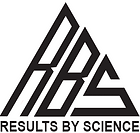For athletes aiming to reach the pinnacle of their physical potential, a well-structured workout program is the cornerstone of success. Whether aspiring to excel in a specific sport or simply aiming for overall athleticism, a tailored athlete workout program addresses the unique demands of athletic performance. In this comprehensive guide, we explore the essential components and principles that constitute an effective athlete workout program.
Understanding the Athlete's Needs:
Athletes engage in diverse sports and activities, each requiring specific physical attributes and skills. Therefore, an effective athlete workout program should be tailored to the individual's sport, position, and personal goals. Training for a sprinter, for example, will differ significantly from the regimen of a basketball player or a triathlete. Understanding the specific needs of the athlete is paramount to crafting a program that enhances performance and minimizes the risk of injury.
Key Components of an Athlete Workout Program:
Strength Training: Building a solid foundation of strength is fundamental for athletic success. Strength training enhances power, stability, and overall physical resilience. Athletes should focus on compound movements such as squats, deadlifts, bench presses, and cleans, incorporating both bilateral and unilateral exercises to promote balanced muscle development.
Power and Explosiveness: Many sports require explosive movements, whether it's a sprinter bursting off the starting line or a basketball player leaping for a rebound. Plyometric exercises, Olympic lifts, and medicine ball drills are essential for developing power and explosiveness, enhancing an athlete's ability to generate force quickly.
Speed and Agility Training: Speed and agility are critical in various sports. Incorporating drills such as sprints, shuttle runs, ladder drills, and cone exercises helps improve an athlete's ability to change direction rapidly, accelerate, and decelerate efficiently.
Endurance Conditioning: Depending on the demands of the sport, performance training for athletes may need to develop cardiovascular endurance. This can be achieved through activities like running, cycling, swimming, or sport-specific conditioning drills. High-intensity interval training (HIIT) is particularly effective for improving both aerobic and anaerobic endurance.
Flexibility and Mobility: Ensuring adequate flexibility and joint mobility is crucial for preventing injuries and optimizing performance. Dynamic stretching, yoga, and mobility exercises should be incorporated into the workout routine to enhance range of motion and reduce the risk of muscle imbalances.
Recovery and Regeneration: Adequate recovery is often an overlooked but critical aspect of an athlete workout program. Incorporating recovery strategies such as proper sleep, hydration, nutrition, and activities like foam rolling and stretching helps reduce muscle soreness, prevent burnout, and optimize performance.
Periodization and Progression:
Effective athlete workout programs often utilize periodization, a systematic approach that involves dividing the training program into distinct phases. These phases typically include the preparatory or off-season, the competitive or in-season, and the transition or off-season. Each phase has a specific focus, allowing athletes to build strength, address weaknesses, peak for competitions, and recover strategically. Progression within each phase is essential, gradually increasing the intensity, volume, or complexity of exercises to continually challenge the body and promote improvement.
Sport-Specific Training:
Tailoring the workout program to the specific demands of the athlete's sport is paramount. Sport-specific training involves mimicking the movements and conditions encountered during competition. For example, a tennis player may focus on lateral movements, agility drills, and rotational exercises, while a soccer player might emphasize sprinting, change of direction, and aerobic endurance. Sport-specific training ensures that the athlete's physical preparation directly translates to improved performance on the field or court.
Nutrition as a Pillar of Performance:
An athlete's workout program is incomplete without a comprehensive approach to nutrition. Proper fueling is essential for energy, recovery, and overall health. Athletes should prioritize a balanced diet that includes an appropriate mix of carbohydrates, proteins, fats, vitamins, and minerals. Hydration is equally crucial, and athletes must maintain optimal fluid balance to support performance and prevent dehydration.
Consulting with Professionals:
Designing and implementing an athlete workout program can be complex, and seeking guidance from professionals is highly recommended. Certified strength and conditioning coaches, sports nutritionists, and sports medicine professionals can provide personalized assessments, program design, and guidance on technique to ensure the athlete's safety and maximize their potential.





Comments